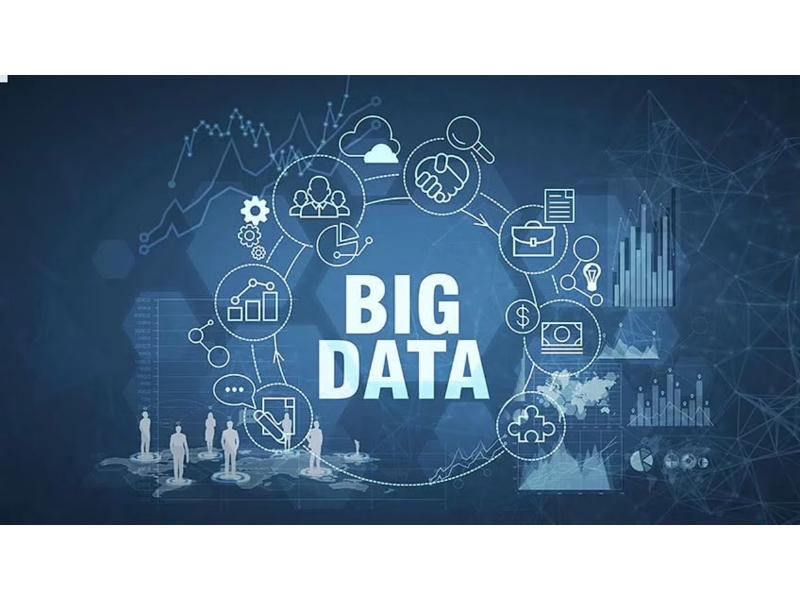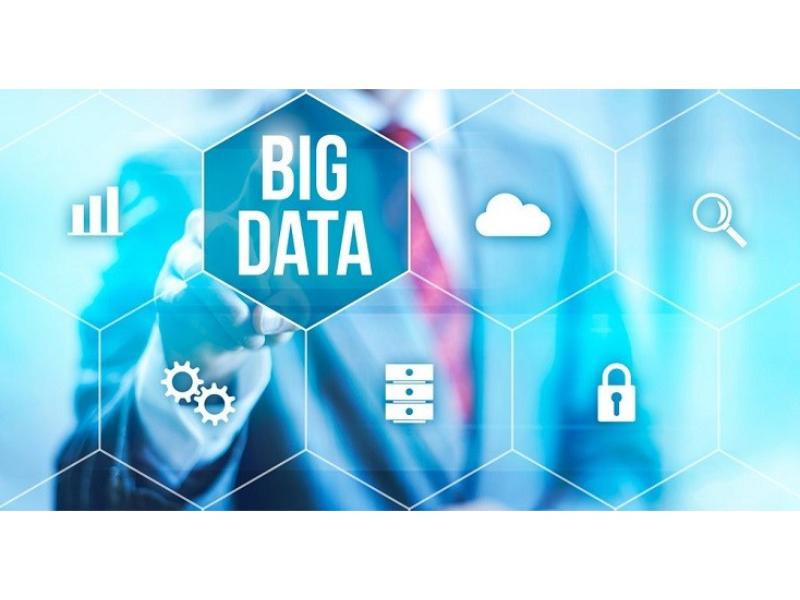Big Data Processing plays a crucial role in generating insights and fostering innovation in our data-centric environment. Gaining a solid understanding of its fundamental elements can unlock new opportunities and address intricate challenges. In this blog post, we will explore Big Data Processing in depth, discussing its importance, the hurdles it faces, and practical examples of its application in the real world.
What is Big Data?
Big data is a set of structured, semi-structured, and unstructured data that can be employed for advanced data analysis techniques like machine learning and predictive analytics. The five essential characteristics that Doug Laney uses to characterize big data are Volume, Velocity, Variety, Value, and Veracity, or the “5 Vs.”
- Volume: pertains to the total amount of structured and unstructured data gathered.
- Velocity: indicates the speed at which this data is generated and processed.
- Variety: encompasses the different types of data formats, including audio, video, text, and numerical information.
- Value: reflects the usefulness of the collected data.
- Veracity: addresses the reliability and accuracy of the data obtained.
While there is no set amount associated with “big data,” implementations typically entail the long-term collection of gigabytes, terabytes, or even zettabytes of data. Large datasets are now used by enterprises for a variety of purposes, including developing focused marketing strategies, better customer service, and managerial practices. Big data, for instance, can give companies valuable consumer insights that improve marketing campaigns and increase client engagement.

Definition of Big Data
What is Big Data Processing?
Big Data Processing is a set of approaches or frameworks for gaining access to massive amounts of data and extracting relevant insights. Initially, Big Data Processing entails data collection and cleaning. Once you have obtained high-quality data, you may utilize it for statistical analysis or to create Machine Learning models for prediction.
5 Stages of Big Data Processing
Grasping the different stages involved in Big Data Processing is vital for efficiently handling and interpreting massive datasets. The process can be broken down into these five key phases:
Step 1: Data Extraction
The first phase of Big Data Processing involves gathering data from a variety of sources, such as enterprise applications, web pages, sensors, marketing platforms, and transaction records. Data professionals use multiple streams of both structured and unstructured data to extract this information.
For example, when creating a Data Warehouse, this step requires consolidating data from various sources and then validating it by eliminating inaccuracies. To inform future decisions based on the collected data, it must be both accurately labeled and precise. This stage sets quantitative benchmarks and improvement goals.
Step 2: Data Transformation
In the transformation phase, data is altered or reformatted to facilitate different insights and visualizations. Various techniques such as aggregation, normalization, feature selection, binning, clustering, and generating concept hierarchies are employed during this stage. These methods enable developers to convert unstructured data into structured formats that are easy to understand. Consequently, this transformation enhances business and analytical operations, empowering organizations to make informed data-driven decisions.

Steps of data processing in big data
Step 3: Data Loading
During the loading phase, the processed data is transferred to a centralized database system. Prior to loading, it’s essential to index the database and remove any constraints to streamline the process. With Big Data ETL (Extract, Transform, Load), the loading procedure becomes automated, well-structured, and can be executed in either batch or real-time modes.
Step 4: Data Visualization/Business Intelligence Analytics
Tools and techniques for data analytics in Big Data Processing allow companies to visualize extensive datasets and develop dashboards that provide a comprehensive view of business operations. Business Intelligence (BI) Analytics addresses key questions regarding growth and strategy. These BI tools help in making predictions and conducting what-if analyses on the transformed data, assisting stakeholders in understanding the intricate patterns and correlations within the data attributes.
Step 5: Machine Learning Application
The Machine Learning stage of Big Data Processing focuses on building models that adapt and improve based on new inputs. Learning algorithms facilitate the rapid analysis of large datasets. There are three primary types of machine learning:
- Supervised Learning: involves using labeled data to train models and predict outcomes, leveraging data patterns to identify new output for the labels. This approach is commonly applied in scenarios that utilize historical data to forecast future results.
- Unsupervised Learning: relies on unlabeled data, where algorithms train without prior labels. This method is applied to datasets lacking historical labels.
- Reinforcement Learning: operates without primary data input for models. Instead, algorithms determine decisions based on observations or situational factors, adjusting their strategies through a reward function to encourage correct decisions.
The Machine Learning phase of Big Data Processing enhances the capability to automatically identify patterns and conduct feature extraction in complex unstructured data without human intervention, proving to be an invaluable resource for Big Data analysis.

Processing Big Data has 5 stages
Advantages of Big Data Processing
The expansion of Big Data is accelerating and doesn’t appear to be slowing anytime soon. Many industries are realizing the immense value this data holds. However, to fully harness its potential, efficient Big Data processing is crucial. In this part, we’ll explore the advantages of Big Data Processing:
Enhanced decision-making
Big data processing is essential to an organization’s adoption of a data-driven strategy. Big databases may be efficiently managed and analyzed by businesses to find trends and get insights that help them make better strategic and accurate operational decisions.
Increased flexibility and creativity
Big data empowers businesses to gather and process real-time information, enabling them to quickly adapt and maintain a competitive edge. These insights can accelerate the development, planning, and launch of new products, features, and updates, fostering innovation.
Improved customer experiences
Companies can gain deeper insights into consumer behavior and improve personalization and experience optimization to better match the requirements and expectations of their customers by combining and analyzing structured and unstructured data.
Continuous insights
Big data processing facilitates the integration of real-time data streams with advanced analytics, enabling businesses to continuously gather data, uncover fresh insights, and identify new growth opportunities, driving ongoing value creation.
Simplified processes
Leveraging big data analytics tools enables faster data processing, which can highlight areas for cost reduction, time savings, and overall operational efficiency improvements.
Stronger risk management
Businesses are better able to evaluate risks, identify possible threats, and put effective mitigation plans into place—all of which improve overall risk management—when they analyze huge volumes of data.

Some significant benefits of Big Data Processing
Challenges in Big Data Processing
Working with Big Data presents a variety of challenges that can complicate the handling of vast amounts of information. Here’s a breakdown of these issues in straightforward language:
- Volume: Big Data refers to an immense quantity of information, far exceeding what standard computers can easily manage. Handling such substantial data sets poses a significant challenge.
- Velocity: Data is generated at lightning speed, resembling a fast-moving train. The challenge lies in processing this information swiftly so it can be utilized effectively. Imagine trying to catch a rapidly thrown ball.
- Variety: Data arrives in multiple formats—text, numbers, images, videos, and more. Making sense of these diverse types is akin to piecing together a puzzle made from various games.
- Veracity: At times, data may not be reliable, containing errors or inconsistencies. Navigating unreliable data is similar to attempting to read a book that has missing pages.
- Complexity: Big Data often involves numerous sources and systems. Keeping everything functioning harmoniously is like juggling multiple balls simultaneously without dropping any.
- Privacy and Security: Big Data frequently encompasses sensitive information. Safeguarding this data from cyber threats and ensuring responsible usage is a significant concern, much like protecting your secrets from inquisitive onlookers.
- Costs: The expenses associated with storing and processing Big Data can be substantial. Balancing the demand for processing power with budgetary constraints is comparable to maintaining warmth in your home without overspending on heating.
- Scalability: As data volumes increase, systems must also scale. Ensuring that everything can expand seamlessly without significant disruptions is akin to renovating a house while still living in it.
- Skill Gap: Engaging with Big Data necessitates specialized knowledge. Finding qualified individuals who understand the complexities of Big Data can be challenging.
- Legal and Ethical Concerns: There are regulations governing data usage, which can vary by region. Adhering to these rules and ensuring ethical practices is similar to following the guidelines of a game.
By recognizing these challenges, organizations can better strategize their approach to managing Big Data effectively.

The challenges in Processing Big Data
Wrap-up
Organizations can get valuable insights from large datasets by utilizing big data processing. Businesses may improve decision-making, raise customer satisfaction, increase operational effectiveness, and lower risks by employing the right tools and processes. But in order to fully benefit from big data, it is key to solve issues with data quality, smooth integration, scalability, and making sure security measures are strong.
The data analytics solutions offered by BytePilot may be just what your company needs, particularly if you’re just getting started with big data. In addition to our broad range of services, BytePilot helps businesses at every stage by providing insightful direction and advice on handling data analytics. Get in touch with us right away to learn how we can help your company navigate the data-driven environment.